Early Bronze Age Batman isn’t my favorite era of the Darknight Detective by any means. It is not, however, a bad era, and it’s fascinating to watch Batman’s continued transition away from the New Look. So here we go with some stories from the middle of 1970.
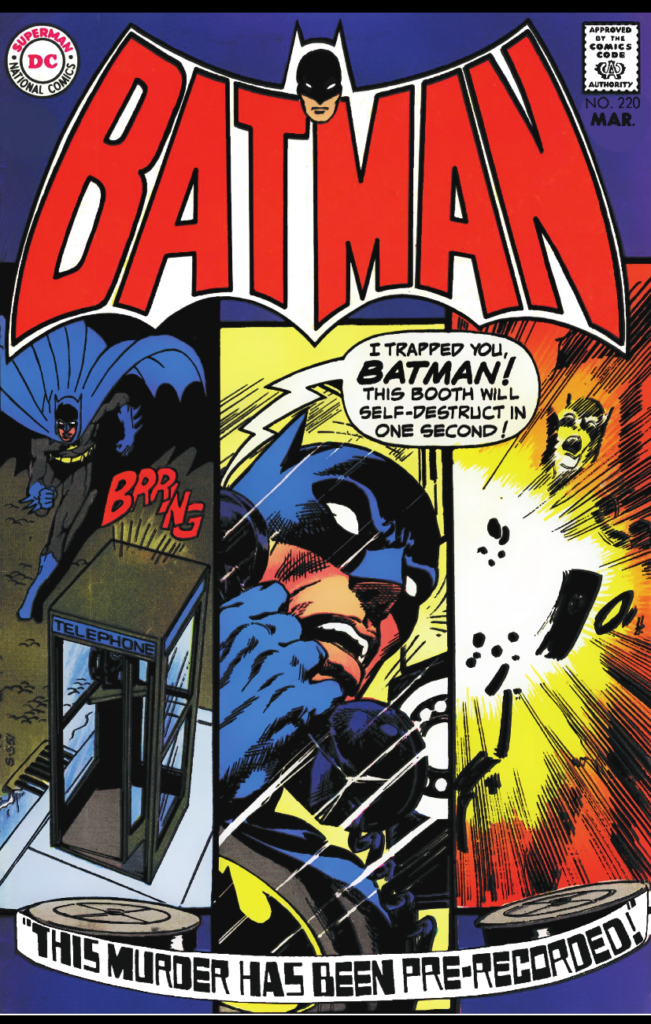
Batman #220 kicks off with a great Neal Adams cover. The first page, by Irv Novick (story by Frank Robbins), expands on the cover image.
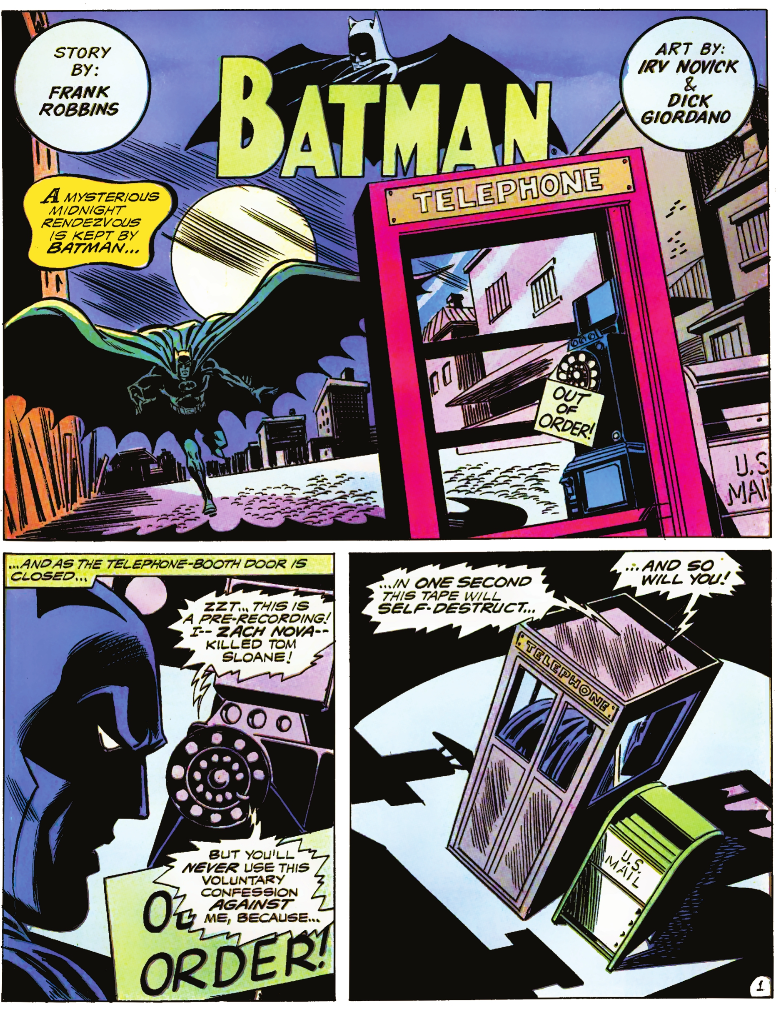
It’s an ingenious story pitting Batman against demolitions expert Zach Nova. He’s not a supervillain, not a supergenius, but he still gives the Caped Crusader a workout. The story also introduces us to reporter Marla Manning.
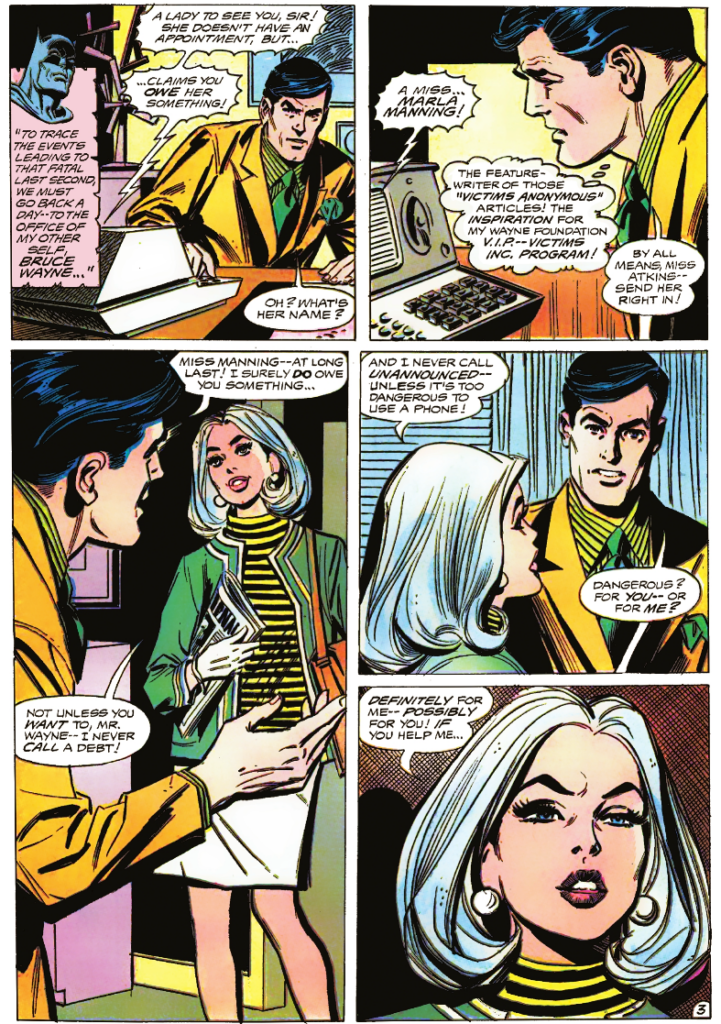
Marla’s specialty is spotlighting forgotten victims of unsolved crimes, which overlaps nicely with Bruce’s Victims Incorporated charity work. I imagine she’d have shown up more (she has one brief appearance a couple of years later) but Victims Incorporated faded away after this story [correction: it’s still going in Detective #403]; editorial assistant Bob Rozakis said in The Batcave Companion that nobody complained about its absence so they didn’t see any need to revive it. Too bad — I liked the idea of Bruce doing something more hands-on than running the Wayne Foundation.
Here’s a Novick fight scene from the issue.
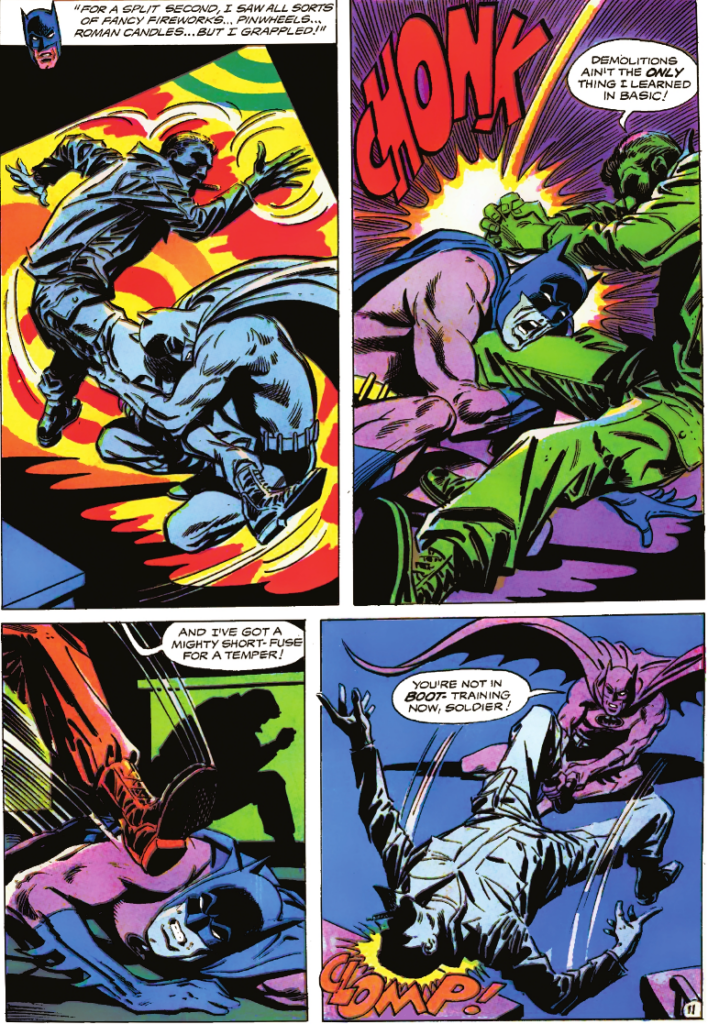
Novick deserves more credit than I think he gets.
Detective Comics #400 introduced the first super-villain — well, sort of — of the Bronze Age, Man-Bat. Though I’ve always preferred this Neal Adams cover from a couple of issues later.

The first story (by Robbins and Adams) has bat expert Kirk Langstrom attempting to endow himself with super-hearing so that he can help his idol, Batman. Wouldn’t you just know the serum has A Few Side Effects? The first three stories work as one continued narrative, with Langstrom turning into a monster, then regaining his humanity. As three separate stories spread out over eight issues (400, 402, then 407) they don’t work as well. Someone in discussion elsewhere suggests Neal Adams couldn’t turn them out any faster; perhaps that explains it.
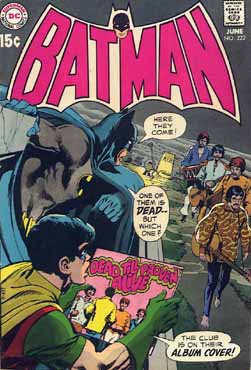
Behind that Neal Adams cover for Batman #222 we have “Dead … Till Proven Alive” (Robbins, Novick), a riff on the rumors that the Beatles were covering up Paul McCartney’s death. As the story opens, Dick begins to wonder himself.
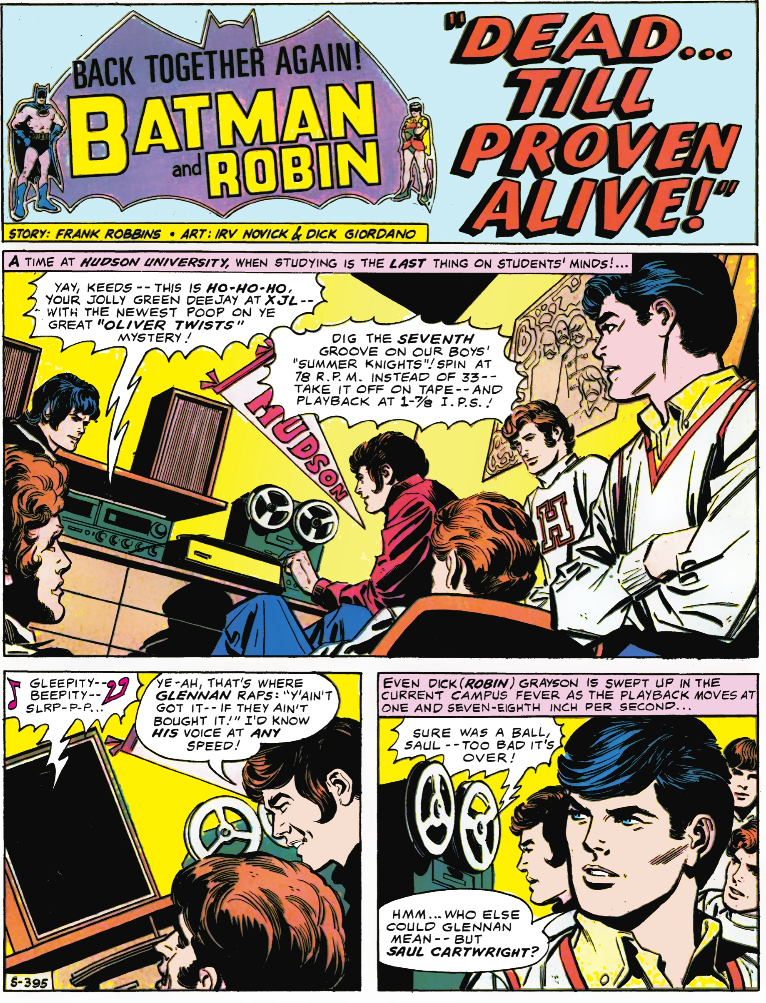
I have no idea if calling the Beatles analogs the Oliver Twists was a random name or had some hidden meaning — any Beatlemaniacs out there who know? In any case, Dick convinces Bruce to investigate.
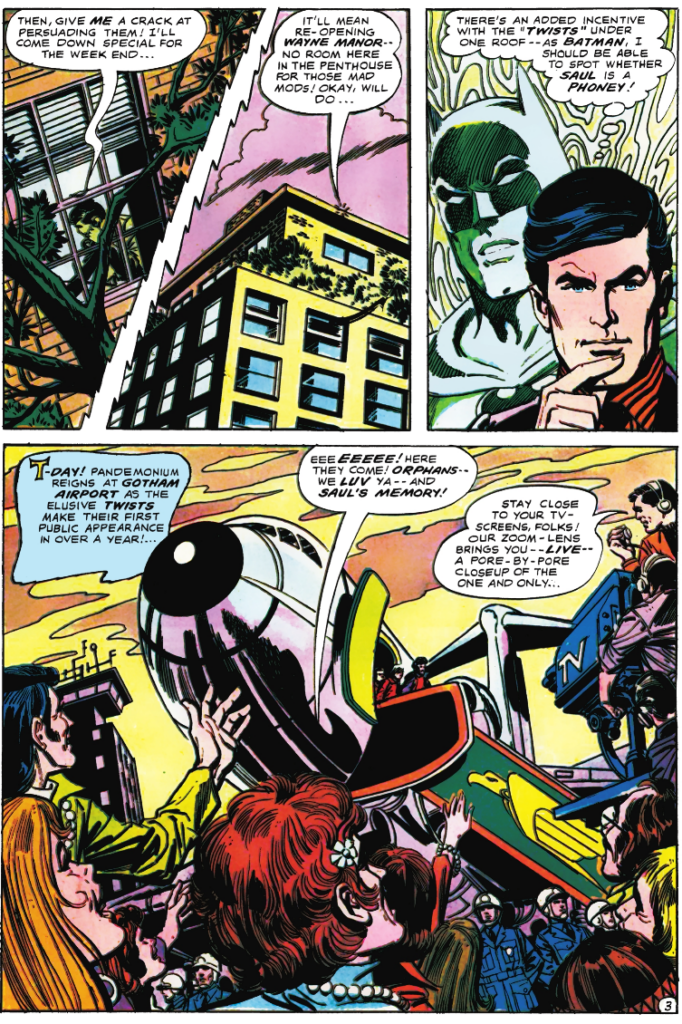
It turns out the rumors of Saul’s death are just a distraction from the truth.
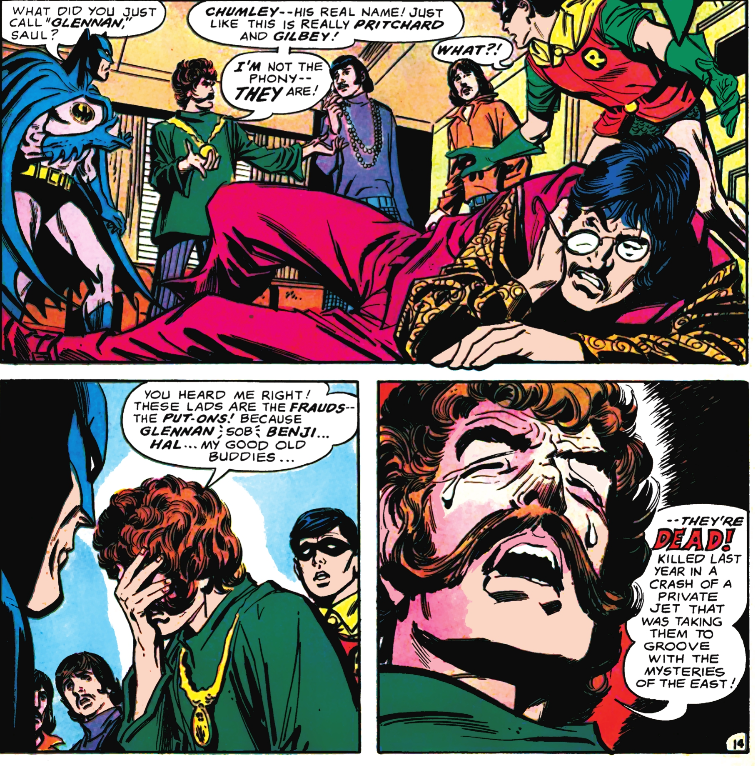
He claims the ruse is to spare the fans’ feelings, though I can’t help wondering if it wasn’t more about the money. Though at the end, Saul has converted his new band into a successful tribute group.
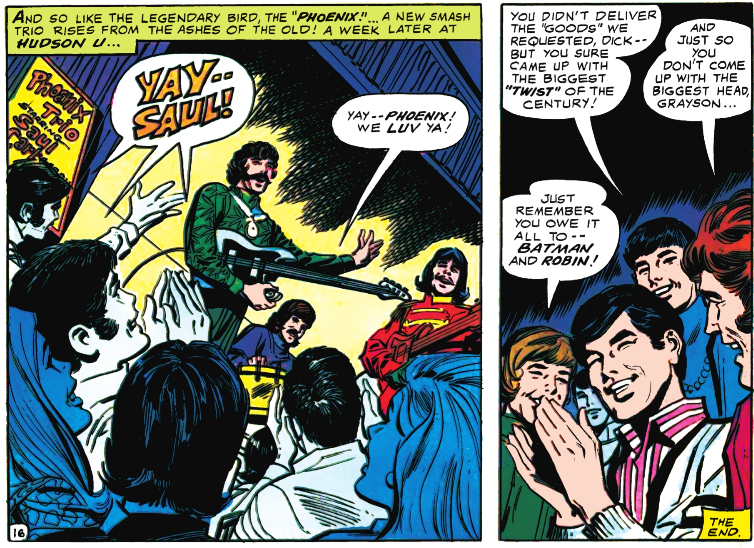
The backup story, Mike Friedrich and Novick’s “Case of No Consequence,” has never gotten as much attention — I’d never even heard of it until my Silver Age reread reached this point. Batman, completely exhausted from a night of crimefighting, encounters a deaf-mute who supports himself taking photos of tourists. Now some hood has stolen his camera. As the title highlights, it’s an unimportant case, the kind of routine crime that happens dozens of times a day, and the Bat is close to collapsing. The guy needs his camera, though, and Batman’s not about to fail him. Even if Bats is so wiped out he can only beat the thief by falling over.
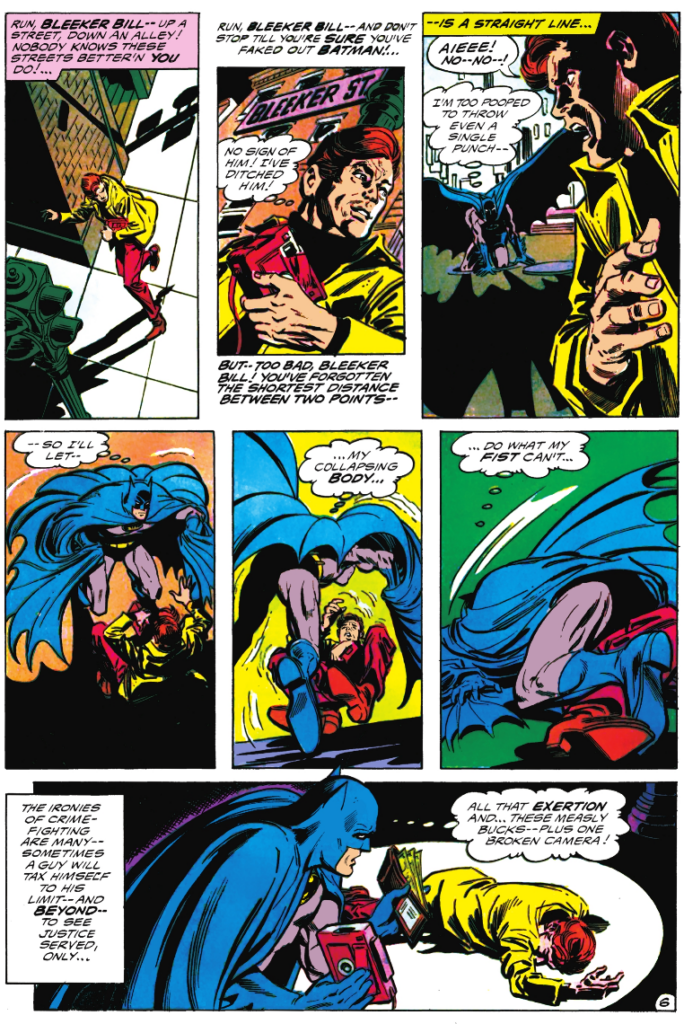
In a lot of stories it would turn out this petty theft was a big deal after all. The deaf-mute is tied to someone important, the camera caught the identity of the Zodiac Killer, something like that. Here, nothing, which is why I like it. Pushed to the brink, Batman is still willing to go the extra mile for a nobody who has no-one else to turn to. That’s cooler than the Bat-God will ever be.
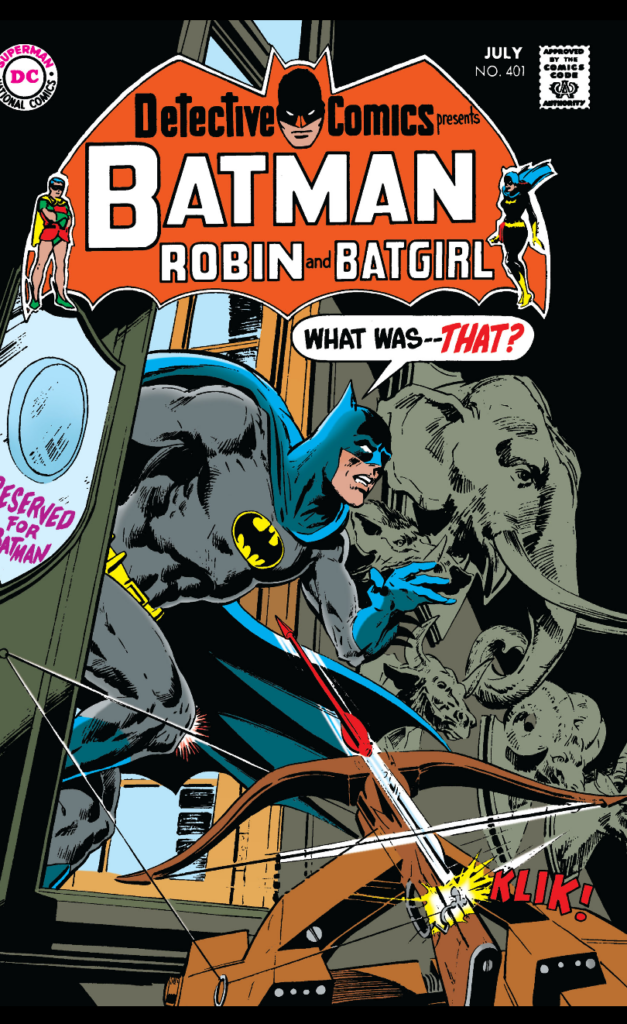
“Target for Tonight” in Detective #401 reworks the old premise of “The Most Dangerous Game,” with psycho hunter Carleton Yager proclaiming Batman his quarry in the ultimate hunt. It’s an old trope, even in comics (Jim Shooter used it in a Legion of Superheroes story not long before) but Robbins (with Bob Brown on art) makes it work. It helps that when Batman realizes Yager’s figured out his other identity, he takes it personally.
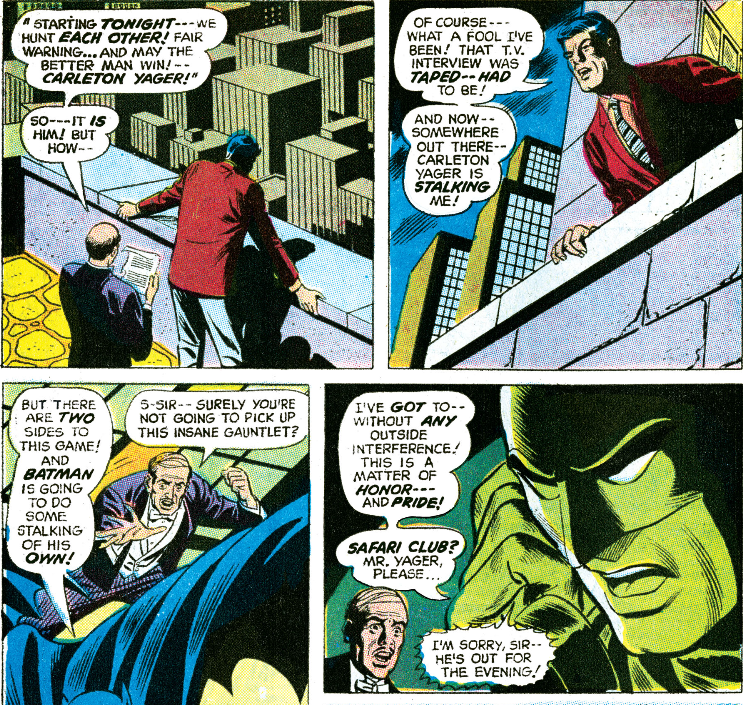
When he sneaks into Yager’s lair, it suddenly occurs to Bruce it might be a trap.
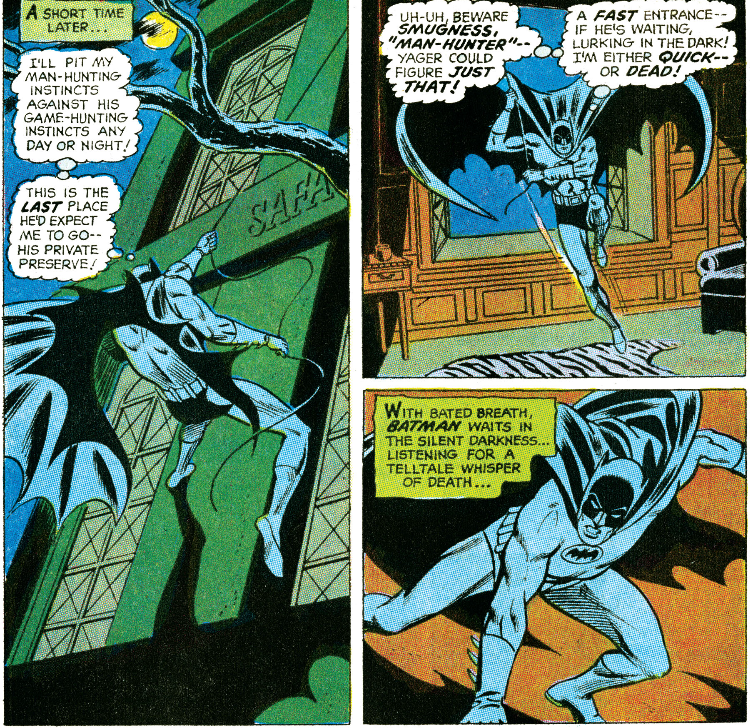
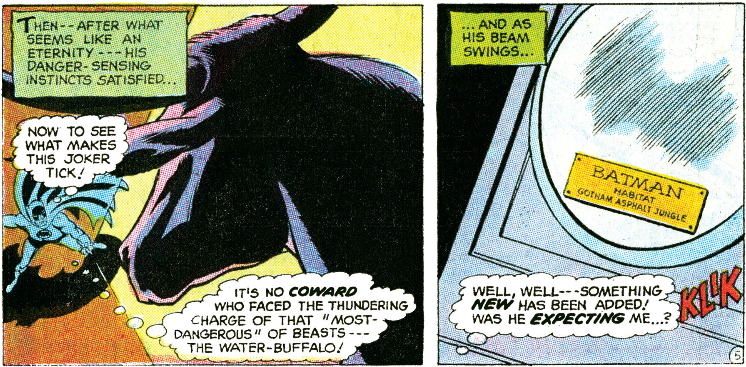
The “klik” was the trap from the cover image. Batman pursues Yager, knowing the hunter’s picked the battleground well.
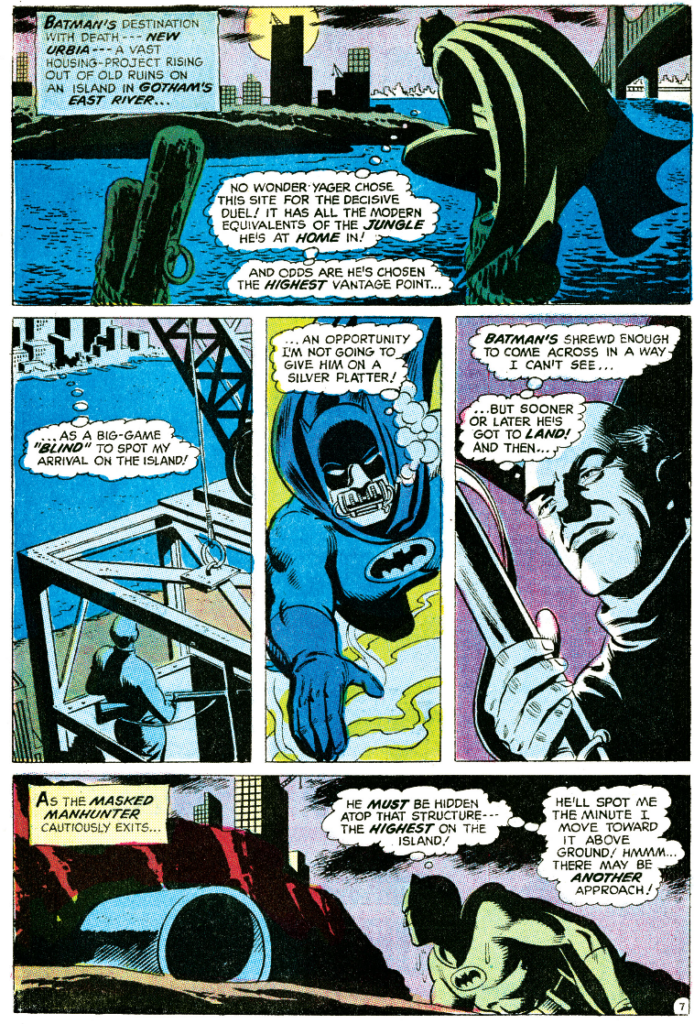
There is. Yager’s prepared for it.
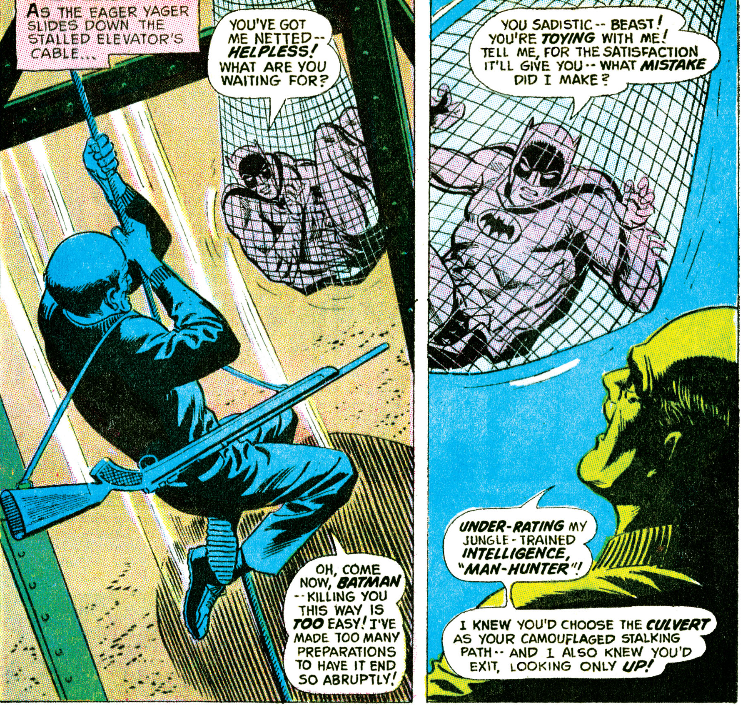
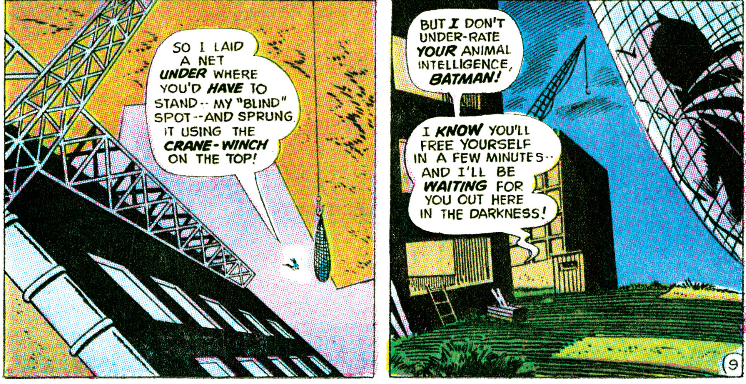
Spoiler: Yager losers. Still, I enjoy that we’re still in the days when Batman was allowed to make mistakes. It’s much more “my” Batman than the 21st century version.


I love the Bronze Age era of Batman comics. along with Norm Brefogle’s run and Batman: The Animated series, those are my go to comics when I’m feeling sad about the shit show that is modern comics.
I think my favorite era is the 1940s but those are excellent choices.
I miss the low-stakes Batman stories. Feels like Gotham, Metropolis, etc. are on fire and under siege every two months. Sometimes I just want Batman to solve a murder or a foil a jewel theft. I also agree they don’t write Batman as human much anymore– at least physically. I like sci-fi Bat-God, but I also like a grounded pulp adventure take, too.
Is any superhero that is currently doing this? I’ve been reading lots of older comics(well, “older” as in 80s and 90s comics) and enjoying those side stories a lot more. Yes I DO want to read about Jimmy trying to pay his rent after he is laid off. YES I DO want to read about ma and pa Kent going on a cruise.
No, none of them I can think of. Like Bill I miss low stakes stories where the hero can save someone’s life, call it a day and head home.
This type of stories are, in my opinion, a very good fit for Batman and is a shame that no one does them anymore. Batman solving a small crime using just basic detective skills? Sounds great. Batman trying to get home because he is tired but he sees a robbery? Also great.
Back at this point Batman was still human enough that even an ordinary punk could land a lucky blow and take him out. It was a long time before power inflation hit him.
I would argue Ryan North’s Fantastic Four has been doing this. One or two issue stories, big medium-to-hard sci-fi ideas, rotating its focus on the various characters and supporting cast, with plot solutions based around problem-solving. I’ve loved the trades I’ve read so far. Yes, it led to a big Marvel Dr Doom crossover, but the main FF book itself has been enjoyable and standalone.
I would really love this same approach be taken with Spider-Man, Batman, etc. Batman’s the most versatile character in fiction. If we can have 3 or 4 monthly Bat-titles, surely one can be a little more old-school in story structure and a little more grounded or low-stakes.
To be fair, I’ve heard Batman: Dark Patterns is great, but I am waiting for the trade, so maybe it’s fulfilling this. It’s a 12 issue series with four three-part mysteries.
I love the ’90s Superman books. It was basically a weekly TV series back then with a large supporting cast. The writer of each monthly book seemed to have their favorites so we’d check in on everybody with ongoing subplots. Remember subplots?
They’ve got the first Dark Patterns issue on the app. I’ll check it out.
The 1990s triangle era was remarkable. Everything seemed to work and yes, they did the subplot/plot balance right.
Oh god, yes, on Gotham City. “The city’s in flames!” is now Tuesday.
Nice round up. Have bought most of these back issues, luckily before the 2020/1 boom, and still to read some.
Because of the time period and also because of what and who they’re associated with, if you took a straw poll of comics fans who aren’t big Bat fans and asked: “Quick, who created Manbat along with Neal Adams?”, most would reply “Denny O’Neil”.
So I guess Frank Robbins, who otherwise isn’t that well known to general fandom -especially those under fifty – deserves a bit more credit. He and Julie Schwartz got the darker stuff rolling (Operation Blindfold[?] two-parter with that great cover of Batman & Robin facing a bullet reflected in sunglasses) before O’Neil/Adams really sunk their teeth into the Darknight Detective. Not forgetting Adams drew Batman operating at night with Haney in Brave & Bold.
Rock groups turning into tribute bands? Welcome to the new millennium, 1970!
That Novick fight scene, it’s nice to see Dick Giordano rein in the hot Adams house style and bring out a bit of more of Irv’s style.
Conrad: yes BronzeBat with this crew plus Aparo, Englehart/Rogers is my fave; along with Grant/Breyfogle. He’s formidable, not infallible.
I’ve heard Supes’ 1990s triangle era is good, must read more.
Oh for a long time I “remembered” Man-Bat as an O’Neil creation. I agree Robbins, like Novick, deserves more credit — I covered Operation Blindfold a while back (https://atomicjunkshop.com/the-three-rs-robbins-robin-and-relevance/)
I wouldn’t know either without checking. I suspected you’d covered Operation Blindfold, Fraser. Between you and Mr Stewart’s admirable work, I lose track!
I’m glad I found his blog. It’s a lot of fun, and with a good comments section.